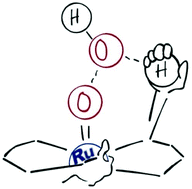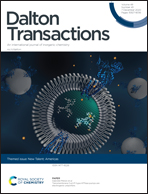In need of a second-hand? The second coordination sphere of ruthenium complexes enables water oxidation with improved catalytic activity
Abstract
Artificial photosynthesis enables the conversion and storage of solar energy into chemical energy, producing substances with high energy content. In this sense, the oxidation of water can provide the H+ ions and electrons needed for the energy conversion and storage processes. Since 2005, it has been known that single-site coordination compounds can act as water oxidation catalysts (WOC). Improvement of the catalytic activity, however, has occurred mainly by the choice of the redox-active metal matching with a series of compatible ligands, more specifically, paying attention to the electronic characteristics of the organic framework of the first coordination sphere. Recently, the use of dangling bases dramatically increased the catalytic activity of new species as WOC, taking advantage of what is called a second coordination sphere. With this assistance, some compounds were shown to reach turnover frequencies (TOF) of 104 s−1, while compounds with the first coordination sphere commonly exhibit TOF ca. 10−1 s−1. In this manuscript, we discuss the concept, together with a number of examples, of the use of controlled interactions between the first and second coordination spheres that have been wielded to improve the performance of ruthenium-centered complexes as WOC in water oxidation reactions.

- This article is part of the themed collections: New Talent: Americas and 2020 Frontier and Perspective articles


 Please wait while we load your content...
Please wait while we load your content...